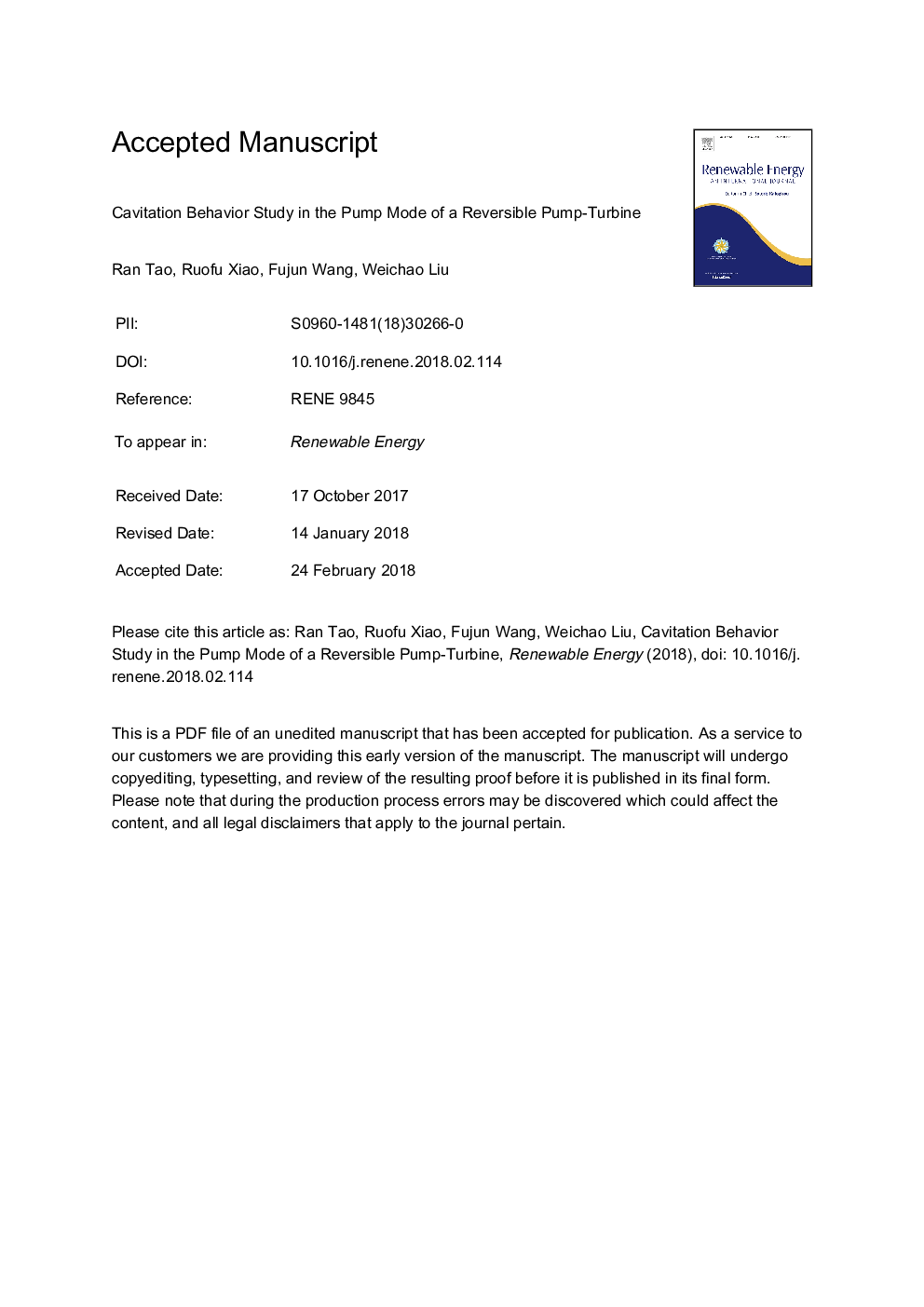| Article ID | Journal | Published Year | Pages | File Type |
|---|---|---|---|---|
| 6764408 | Renewable Energy | 2018 | 23 Pages |
Abstract
Cavitation is an important issue of reversible pump-turbines especially in the pump mode. It usually causes noise, vibration, material-damage and operation stability on the pump-turbine unit. To diminish the bad influences of cavitation, the cavitation behavior in the pump mode of a pump-turbine is experimentally and numerically investigated. Results show that the best range of inception cavitation number and the best range of critical cavitation number have no intersection. Influenced by the incidence angle on the leading edge, the best inception cavitation range occurs around the impeller design condition. However, the best critical cavitation range is found at partial-load. To find a proper cavitation criterion, the development of cavitation is studied in detail. The relationship among the critical cavitation, the vapor volume and the fluid volume below the vaporization pressure is analyzed. At partial-load, cavitation incepts at a higher cavitation number than under the impeller design condition. During the cavitation number's decreasing, the vapor volume under impeller design condition transcend it at partial-load. Finally, the impeller design condition has a higher critical cavitation number than the partial-load. Considering the existing cavitation before critical cavitation, the inception cavitation standard is strongly recommended for the pump-turbine and other high-energy hydraulic turbomachineries.
Related Topics
Physical Sciences and Engineering
Energy
Renewable Energy, Sustainability and the Environment
Authors
Ran Tao, Ruofu Xiao, Fujun Wang, Weichao Liu,
